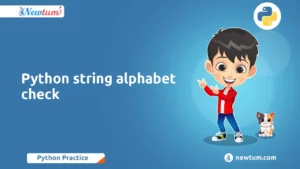In Python, checking whether a list is empty or not is a common task in programming. Determining the emptiness of a list is crucial for making decisions and ensuring the proper flow of your program. In this blog, we will explore how to check if a list is empty or not in Python.
We will dive into the step-by-step logic and operations involved in the code, providing a comprehensive understanding of how to evaluate the emptiness of a list using the not operator. By the end of this blog, you will have a solid grasp of this fundamental concept, enabling you to effectively handle and process lists in your Python programs.
Let’s explore the Python program to check if a list is empty or not using a not operator.
Python Program to Check if a List is Empty or Not Using not Operator
# Check if a List is Empty or Not in Python Using Not Operator
# Initialize list
list = [1,2,3,4,5,6,7,8,9]
# evaluating empty list object to False
if not list:
#If List is Empty
print('Empty list')
else:
#If List is not Empty
print('List is not Empty \n',list)
Python Code Explanation
- Initialising the List
We start by initializing a list with some elements. In this example, the list is [1,2,3,4,5,6,7,8,9].
- Evaluating the List Using the Not Operator
The not operator in Python is used to negate a boolean value. In this code, we use the not operator to evaluate whether the list is empty or not. If the list is empty, the not operator will return True. Otherwise, it will return False.
- Conditional Statements Based on the Evaluation
Based on the evaluation result, we have conditional statements to handle both cases:
List is Empty: If the evaluation result is True, it means the list is empty. In this case, we print the message ‘Empty list’.
List is Not Empty: If the evaluation result is False, it means the list is not empty. In this case, we print the message ‘List is not Empty’ followed by the contents of the list using the print function.
- Printing the Output
The code execution reaches this step after the appropriate message is printed based on the evaluation result. If the list is not empty, the contents of the list are displayed as well.
Output:
The output of the code depends on whether the list is empty or not. If the list is not empty, the output is:
List is not Empty
[1, 2, 3, 4, 5, 6, 7, 8, 9]On the other hand, if the list is empty, the result will be:
List is EmptyHere are a few other ways to check if a list is empty:
- Using the len() function:
You can use the len() function to determine the length of the list and check if it is equal to zero. However, using len() requires iterating over the entire list to count its elements. This can be less efficient for large lists compared to the not operator, which provides a direct boolean evaluation.
- Directly checking for an empty list:
Python allows you to directly check if a list is empty by evaluating the list itself in a conditional statement. This approach is concise and readable. It leverages the inherent truthiness of empty lists in Python, making the code more expressive.
We use the not-operator method as it provides a concise and expressive way to check if a list is empty. This approach is widely used and considered a standard convention in Python for checking empty lists. It is recognized by most Python developers, making your code more maintainable and understandable by others.
In this tutorial, the code demonstrates a simple and effective way to check whether a list is empty or contains elements using the not operator in Python. Understanding how to check for an empty list is crucial in programming, as it allows us to handle different scenarios based on the presence or absence of elements in the list. This knowledge can be particularly useful when dealing with input validation, conditional statements, or iterative processes where empty lists may require special handling.
By following the step-by-step logic and operations presented in this code, you can easily incorporate this technique into your own Python programs. It provides a concise and efficient way to determine the emptiness of a list and adapt your code’s behavior accordingly.
Overall, the ability to check if a list is empty or not using the not operator empowers you to write more robust and flexible Python code, enhancing the reliability and functionality of your programs.
Some FAQs when we check if a list is empty or not
Explanation: Yes, you can add elements to an empty list using various methods such as the append() method or by directly assigning values to list indices.
You can handle an empty list by using conditional statements, such as an if statement with the not operator, to check if the list is empty before performing any operations. This allows you to avoid errors and handle the empty list case gracefully.
If the list is not empty, it has a length greater than zero, which is considered truthy in Python. Thus, using the not operator on a non-empty list will return False.
Yes, you can use the len() function to check if a list is empty. If the length of the list is zero, it means the list is empty.
Yes, apart from using the not operator and the len() function, you can also directly compare the list to an empty list ([]) using the equality operator (==).


